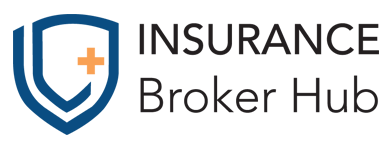2020 has been a challenging year for many individuals. Following the outbreak of the coronavirus and the subsequent lockdowns, many Americans have seen changes in their living and working situations.
While some have benefitted, embracing work from home and realizing more productivity, learning new skills, and getting closer to their loved ones, others have had significant life changes. Job loss, divorce, changes in living situation, and more have left many living in their own new normal.
Over the past six months, we’ve spent a lot of time talking about your insurance options, discussing everything from short-term health insurance coverage to cost-sharing subsidies, COBRA to the COVID Special Enrollment Period. But in each of these, we mentioned that most of these options will provide you coverage until you can secure longer-term coverage.
Well, the time for securing coverage in 2021 is nearly upon us, and if you haven’t been through marketplace Open Enrollment, you’re going to want to understand what’s coming.
What Should You Know about Open Enrollment?
In simplest terms, Open Enrollment is the timeframe in which those who need health coverage can enroll. Under the 2010 Affordable Care Act, those looking to enroll for health coverage on the insurance marketplaces must do so during Open Enrollment. Initially spanning two months, Open Enrollment was cut to 45 days in 2017 in order to reduce costs to the taxpayer.
When is Open Enrollment 2021?
For the states using the Healthcare.gov marketplace, if you need a plan starting January 1, 2021, the Open Enrollment Period runs from Sunday, November 1 to Tuesday, December 15, 2020.
This depends on the type of exchange. Federal, State-based, Federal Partnership agreements, and Partnership plans will use the healthcare.gov marketplace, while 12 states and the District of Columbia have their own enrollment websites.
In turn, certain states have longer timeframes. California (Nov. 1 – Jan. 31), Colorado (Nov. 1 – Jan. 15), and D.C. (Nov. 1 – Jan. 31) have all permanently extended open enrollment periods.
Others including Minnesota (Nov. 1 – Dec. 22), Pennsylvania (Nov. 1 – Jan. 15), Nevada (Nov. 1 – Jan. 15), and New Jersey (Nov. 1 – Jan. 31) have set their own deadlines.
Outside of this, certain parties are eligible to enroll at other points, either due to a Qualifying Life Event, or due to special provisions allowing native Americans to enroll year-round.
I’ve Been Through Open Enrollment Before at My Employer. How Does This Differ?
For those who worked at an employer with large group coverage, the concept of Open Enrollment may feel familiar; companies run their open enrollment periods at a similar time.
The difference, however, is that you likely were given paperwork, had an opportunity to discuss options with your family and HR department, and received friendly reminders to submit your paperwork.
However, if you have lost your insurance in 2020, Open Enrollment (and the marketplaces in general) are a different beast.
Rather than having a few pre-selected options presented to you, you answer a couple questions about the state you live in, your age, income, and more. From here, you will be presented a variety of options with varying costs based on your age, zip code, tobacco usage, number of people covered, and the insurance company with whom you work.
Are the Terms the Same?
Though you can expect to run into terms like subsidy and tax credit (discussed below), most of the concepts are the same. You can still expect to pay premiums each month, you still will have a deductible, and you’ll pay copays for services. Learn more about the basic terms and what will affect your premium costs here.
I Heard Most People Save Money. Is This True?
Depending on your circumstances, you may be eligible for a cost sharing subsidy or advance premium tax credit. This depends on the number of persons in your household, and your financial situation in 2019. For many, this may result in challenges in 2021. The Kaiser Family Foundation Health Insurance Marketplace Calculator will let you enter a few details to see if you can save some money.
Read more about how these affect you in our article on cost sharing and tax credits.
What Are These Metals?
One of the ways the ACA worked to ‘simplify’ health coverage is to break down plans into four categories—Bronze, Silver, Gold, and Platinum—each with their own cost structure:
- Bronze: Good for the young, healthy, and unlikely to use the system, these often result in you paying about 40% of costs.
- Silver: Often the standard plan, these are for someone with average health who would like to pay somewhat lower deductibles. Expect a 70/30 split.
- Gold: Moving up, these plans have higher premiums and lower deductibles, with the insurer covering 80 percent of costs.
- Platinum: If you expect to use a lot of care, the platinum plan is built with high premiums and low deductibles.
For more information on the different metals, see our article breaking them down further.
Do I Need Insurance?
Probably. After all, we are in the middle of a pandemic, and unless you have $75,000 laying around for a 10-day hospital stay, it’s likely going to be more affordable to pick out a plan.
But Do I Need Insurance through the Marketplace?
Not anymore. Though you won’t get penalized for choosing a plan outside the scope of the ACA (the individual mandate penalty was reduced to $0 after the end of 2018), these plans have their own caveats.
Short-term coverage options are available and can hold you over until you are able to secure coverage in some other form. However, these providers don’t need to offer the ten essential health benefits and do have the right to turn you away if you have a preexisting condition.
Isn’t There an Easier Way?
Finding health insurance is still one of those things that is a mystery for many Americans, and navigating the maze that is healthcare.gov is rarely as easy as promised. If all this sounds confusing, we haven’t even gotten into the nuances that go into each state’s requirements for essential health benefits and the application process.
Don’t you wish there was an easier way?
Because there is. If you miss the idea of corporate open enrollment, having a qualified and knowledgeable health insurance broker walk you through your options at no cost to you, fret not. You can still get the assistance you need at no cost to you.
Our free service gives you access to an independent network of national brokers who have the experience and expertise to design a plan around your needs and budget. Our network of brokers will tailor a complete solution for your health coverage needs.
Ready to get started? Simply request a no obligation health insurance quote here.
Additional Open Enrollment Resources
Navigator vs. Broker: Who Should You Turn to for Help During Open Enrollment?


